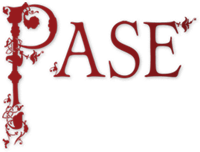Table of Contents
Top of page
Name
Summary
Distribution Map
Property List
Profile
Bibliography
Bottom of page
Godhild 2
Godhild ‘of Greensted’ (Essex), fl. 1066
Male
CPL
4 of 5
Summary
Godhild 2 was a woman of thegnly rank who had a cluster of three manors in western Essex, assessed at nearly 4½ hides and worth over £6. One of her manors included the remarkable timber church at Greensted.Distribution map of property and lordships associated with this name in DB
List of property and lordships associated with this name in DB
Holder 1066
| Shire | Phil. ref. | Vill | DB Spelling | Holder 1066 | Lord 1066 | Tenant-in-Chief 1086 | 1086 Subtenant | Fiscal Value | 1066 Value | 1086 Value | Conf. | Show on Map |
|---|---|---|---|---|---|---|---|---|---|---|---|---|
| Essex | 28,13 | Greensted | Gotild | Godhild 'of Greensted' | - | Hamon the steward | Serlo 'of Essex' | 0.33 | 0.50 | 0.50 | A | Map |
| Essex | 28,13 | Greensted | Gotild | Godhild 'of Greensted' | - | Hamon the steward | - | 1.67 | 3.50 | 4.50 | A | Map |
| Essex | 28,14 | Navestock | Gotild | Godhild 'of Greensted' | - | Hamon the steward | Ralph de Marcy | 0.67 | 0.60 | 0.75 | A | Map |
| Essex | 28,16 | Norton Mandeville | Gotil | Godhild 'of Greensted' | - | Hamon the steward | Wimund 'of Norton Mandeville' | 1.63 | 2.00 | 4.00 | A | Map |
| Totals | ||||||||||||
Profile
A cluster of three manors within 5 miles of one another in the middle Roding valley in west Essex, which all passed after the Conquest to Hamon the steward, plainly belonged to the same Godhild. The largest was Greensted, where Godhild dominated a vill otherwise occupied only by a group of three free men with little more than a virgate apiece. She had a large arable home farm, with three ploughs operated by slaves, and a few farm horses, dairy cattle, and pigs. There were extensive woods, besides 16 acres of meadow on the stream which flows through the vill.Godhild’s manor must also have included that extraordinary survival, the timber-built church of St Andrew (Taylor and Taylor 1980–4: I, 262–4), though it went unmentioned in the DB entry, the text for Essex being very sparing of references to churches or even priests. Antiquarian tradition made the church an eleventh-century foundation marking the spot where the body of the martyred St Edmund rested on its journey from London for reburial at Bury St Edmunds in 1013 (VCH Essex, IV, 60). In fact the origin of that idea is a story in a Bury register written c. 1300 which specifies that the wooden chapel in question was built at Ongar (London, British Library Additional MS 14847, fol. 20); Chipping Ongar, on a main road, is indeed on a plausible route from London to Bury, whereas Greensted, tucked away up a side valley, is not. In any case, Greensted church is probably manorial in origin, standing as it does right by the manor house, and archaeology has shown that the present building was not even the first church on the site.
Godhild’s second manor was up the Roding valley at Norton Mandeville, the larger of the two parts into which the Domesday vill was divided. Godhild’s holding had its own home farm of two ploughs, again operated by slaves, a small livestock operation with dairy cattle and pigs, extensive woods, and some meadow. The other part of Norton, identifiable as the later manor of Norton Foliots north of Norton Mandeville proper (VCH Essex, IV, 179), belonged TRE to a woman called Godgyth (Godid), who after the Conquest gave it to St Paul’s cathedral by some means which the canons found hard to explain to the Domesday commissioners in 1086 (Essex 28:16). Godgyth (Godid) and Godhild (Gotil) did not have the same name, and the repeated statement that they were probably the same person (VCH Essex, IV, 151; Phill. Essex, note 28,16) does not stand up to scrutiny. But the two women did share a first name-element and may conceivably have been kin.
Godhild’s smallest manor lay down the valley from Greensted at Navestock, one of the two smallest shares (at two thirds of hide) of a 9½-hide vill divided among six TRE proprietors (Essex 5:7–8). There was no home farm in 1066, just a couple of bordars with their own ploughteam, besides woods and a scrap of meadow.
Godhild’s compact estate in 1066 was characterized by intensive demesne farming (though without the sheep that were introduced by her Norman successors), and very extensive woodland resources.
The cluster of manors discussed here lay only 20 miles as the crow flies from the nearer of the two manors assigned to Godhild 3, but the journey between them required a crossing of the Thames. Although a relatively small estate divided between Essex and Kent is not inconceivable, we are more likely dealing with two different women, a probability reinforced by the way their names are spelled in DB: Gotild/Gotil in Essex and Godil/Godel in Kent. Besides, Godhild of Essex’s Norman successor Hamon held land in Kent as sheriff there but did not acquire the property of the Kentish Godhild, as might have been expected had they been the same woman.
Bibliography
Phill. Essex: Domesday Book, ed. John Morris, 32: Essex, ed. Alexander Rumble (Chichester: Phillimore, 1983)
Taylor and Taylor 1980–4: H. M. Taylor and Joan Taylor, Anglo-Saxon Architecture, 3 vols, paperback edn (Cambridge: Cambridge University Press, 1980–4)
VCH Essex IV: The Victoria History of the Counties of England: A History of the County of Essex, VII, ed. W. R. Powell (London: Oxford University Press for the Institute of Historical Research, 1956)
